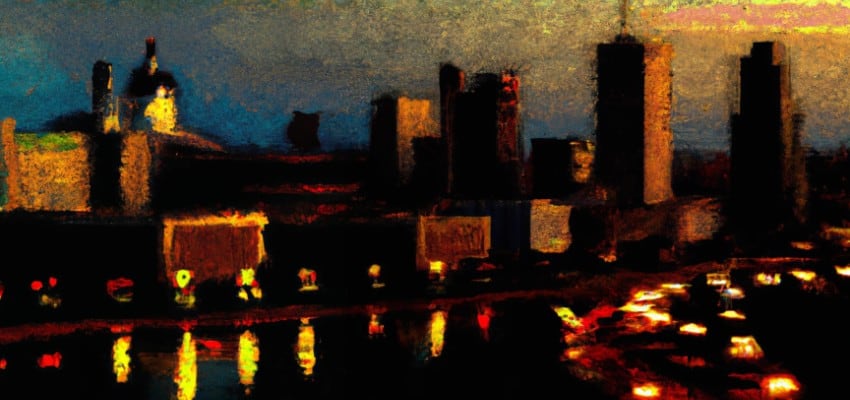|
|
Content Assessment: Incidents and Accidents? Russo-Ukrainian War Update (June 25-July 1, 2023)
Information - 93%
Insight - 93%
Relevance - 91%
Objectivity - 94%
Authority - 95%
93%
Excellent
A short percentage-based assessment of the qualitative benefit of the post highlighting the recent Ukraine conflict assessments in maps from the Institute for the Study of War.
Editor’s Note: The discipline of eDiscovery, which involves the identification, preservation, and analysis of electronic data, is increasingly being used in investigations and litigation relating to war crimes. In the case of the Russo-Ukrainian War, eDiscovery tools and techniques can be used to identify and collect electronic evidence of war crimes, such as emails, social media posts, and other digital communications that may provide valuable insights into the actions of individuals and organizations involved in the conflict. This evidence can then be used in investigations and legal proceedings to hold perpetrators of war crimes accountable for their actions. Additionally, eDiscovery can help to efficiently and effectively manage the vast amount of electronic evidence that may be relevant to war crimes cases, allowing investigators and legal teams to quickly and accurately analyze the data to identify key pieces of information. This weekly update may be useful for cybersecurity, information governance, and legal discovery professionals as they consider investigations and litigation resulting from war crimes committed during the war.*
Background Note: According to the Institute for the Study of War (ISW), Ukrainian intelligence has disclosed that Russian personnel are gradually withdrawing from the Zaporizhzhia Nuclear Power Plant (ZNPP), possibly in preparation for a deliberate mishap. Russian forces have been reported to reduce patrols in the vicinity, with Ukrainian employees of the plant, who have contracts with Russia’s state-owned nuclear energy firm, Rosatom, instructed to evacuate by July 5. Employees are also advised to blame Ukrainian forces in case of an emergency. However, as of June 30, there is no visual evidence of Russian units vacating the ZNPP. GUR Chief Kyrylo Budanov confirmed that preparations for an artificial disaster at the facility are underway.
Emergency preparation exercises for a potential accident at the ZNPP have been conducted in several Ukrainian oblasts. However, Ukrainian Energy Minister Herman Halushchenko admitted that the authorities lack the ability for real-time monitoring of the ZNPP. According to Petro Kotin, the president of Energoatom, radiation sensors near the Kakhovka Reservoir would provide an alert within hours of any radiation leak from the ZNPP.
The possibility of an intentional radiological incident at the ZNPP by Russian forces remains low. The prevailing assessment is that Russia may use the threat of such an incident to restrict Ukrainian counteractions and Western support for Ukraine before the upcoming NATO summit. The consequences of a deliberate radiological incident could hinder Russia’s hold over southern Ukraine by rendering areas uninhabitable.
Source Note: One of the most accurate and detailed sources for ongoing updates on the Ukraine crisis is the Russian Offensive Campaign Assessment from the Institute for the Study of War. The Institute for the Study of War (ISW) is a 501(c)(3) organization and produces strictly non-partisan, non-ideological, fact-based research. ISW seeks to promote an informed understanding of war and military affairs through comprehensive, independent, and accessible open-source research and analysis. ISW’s research is made available to the general public, military practitioners, policymakers, and media members. Providing a daily synthesis of key events related to the Russian aggression against Ukraine, ISW updates may benefit investigators and litigators as they follow the business, information technology, and legal trends and trajectories impacted by and stemming from the current Russo-Ukrainian conflict.
Assessment and Maps**
Russo-Ukrainian Conflict Assessments – An Overview in Maps
- Institute for the Study of War (ISW), Russia Team
- Critical Threats Project (CTP), American Enterprise Institute
General Assessment Background Info
- ISW systematically publishes Russian campaign assessments that include maps highlighting the assessed control of terrain in Ukraine and main Russian maneuver axes.
- These maps augment daily synthetic products that cover key events related to renewed Russian aggression against Ukraine.
The Russian Offensive Campaign Assessments
- July 1, 2023
- By Kateryna Stepanenko, Karolina Hird, Riley Bailey, Angelica Evans, and Mason Clark
Key Takeaways
- Russian sources claimed that Ukrainian forces conducted counteroffensive operations in at least four sectors of the frontline on July 1.
- US Chairman of the Joint Chiefs of Staff General Mark Milley acknowledged that Ukrainian counteroffensive operations will take longer than some Western observers had expected.
- Russian officials and sources celebrated claims that Russian forces defeated small-scale Ukrainian landings in east (left) bank Kherson Oblast on July 1 as if they had won a major victory.
- The exaggerated Russian praise for defeating a small Ukrainian landing suggests either that the Russian military command sincerely fears a Ukrainian attack on east bank Kherson Oblast or that it is desperate for an informational victory following the Wagner Group’s armed rebellion or both.
- Russian forces are likely responding to Ukrainian operations around Bakhmut by pulling forces from elsewhere in Ukraine.
- Ukrainian President Volodymyr Zelensky stated that the Russians might initiate an intentional radioactive leak at the Zaporizhzhia Nuclear Power Plant (ZNPP) as part of a potential Russian strategy to freeze the war.
- Russian propagandists are likely conducting an information campaign to destroy the Wagner Group’s reputation as a uniquely effective fighting force in support of the Russian Ministry of Defense’s (MoD) effort to dismantle the Wagner Group and integrate former Wagner fighters into MoD structures.
- Russian forces continued limited offensive operations along the Svatove-Kreminna line.
- Ukrainian forces continued to conduct ground attacks around Bakhmut.
- Russian forces continued to conduct limited ground attacks in and transfer airborne (VDV) elements to the Bakhmut area.
- Russian forces continued to conduct limited ground attacks along the Avdiivka-Donetsk City line.
- Russian forces continued to counterattack recently-liberated Ukrainian positions on the administrative border between Donetsk and Zaporizhia oblasts.
- Ukrainian forces continued counteroffensive operations in western Zaporizhia Oblast.
- Russian security procedures on the Kerch Strait bridge are likely slowing down Russian logistics from Russia to occupied Crimea.
- Iran may be sending materiel and personnel to Russia to help construct a factory in the Republic of Tatarstan that will reportedly make Iranian combat drones.
- Ukrainian and Western sources continue to report on the abductions of Ukrainian children and adults in the occupied territories.
- June 30, 2023
- By Riley Bailey, Grace Mappes, Kateryna Stepanenko, Angelica Evans, George Barros, and Frederick W. Kagan
Key Takeaways
- Ukrainian forces conducted counteroffensive operations in at least three sectors of the frontline on June 30.
- Ukrainian Commander-in-Chief General Valerii Zaluzhnyi stated on June 30 that Ukrainian forces continue to advance in eastern and southern Ukraine despite lacking essential resources.
- The Russian information space is reacting disproportionately to the Russian military’s failure to drive a small Ukrainian force from east (left) bank Kherson Oblast.
- Ukrainian intelligence reported that Russian forces and officials are gradually leaving the Zaporizhzhia Nuclear Power Plant (ZNPP) possibly in preparation for an intentional “accident” at the facility.
- Russian forces remain unlikely to cause an intentional “accident” at the ZNPP, and Russia is likely continuing to use the threat of an intentional radiological incident to attempt to constrain Ukrainian counteroffensive actions and Western support for Ukraine ahead of the upcoming NATO summit.
- The Wagner Group is reportedly still actively recruiting personnel within Russia, although it is unclear if new recruits are signing Wagner contracts or military contracts with the MoD.
- The Wagner Group reportedly will operate three large field camps in Belarus and an apparent Belarusian milblogger reported that Wagner Group personnel will deploy to Asipovichy, Belarus, soon.
- A Kremlin-affiliated news outlet reported that the Wagner Group will continue operating in Africa, although the details of its operations remain unclear.
- Wagner Group financier Yevgeny Prigozhin reportedly dissolved his domestic media company Patriot.
- Russian and Ukrainian forces continued to engage in battles along the Kupyansk-Svatove-Kreminna line.
- Ukrainian forces continued to counterattack and reportedly made some gains in the Bakhmut area.
- Ukrainian and Russian forces continued to skirmish on the Avdiivka-Donetsk City line, and Ukrainian forces advanced as of June 30.
- Ukrainian forces continued counteroffensive operations in western Zaporizhia Oblast and on the administrative border between Donetsk and Zaporizhia oblasts.
- Russian authorities continue efforts to improve monetary and educational benefits to servicemen in order to retain loyalty and incentivize military service.
- Russian officials and occupation authorities are attempting to explain away the deportation of Ukrainian children to Russia.
- June 29, 2023
- By Riley Bailey, Nicole Wolkov, George Barros, Kateryna Stepanenko, Angelica Evans, and Frederick W. Kagan
Key Takeaways
- The Ukrainian General Staff stated that Ukrainian forces seized the “strategic initiative” in the Bakhmut direction and are currently conducting a broad offensive in the area.
- Ukrainian forces conducted offensive operations in at least two other sectors of the front and reportedly made gains on June 29.
- The Kremlin may intend to assume formal control over the Wagner Group following its armed rebellion and turn it into a state-owned enterprise, although it is not clear if the Kremlin has committed itself to such a course of action.
- Recent satellite imagery may have detected active construction of a speculated new Wagner Group base in Asipovichy, Belarus.
- Kremlin-affiliated businessmen may be acquiring Prigozhin’s domestic media empire, likely as part of ongoing effort to destroy his reputation in Russia.
- Kremlin Spokesperson Dmitry Peskov refused to address Army General Sergei Surovikin’s whereabouts on June 29, prompting more speculations in the Russian information space.
- Western observers continue to speculate about the whereabouts of Russian Chief of the General Staff Army General Valery Gerasimov following Wagner’s rebellion, although his lack of public appearance is not necessarily indicative of his current official standing within the Russian military leadership
- Russian and Ukrainian forces continued limited ground attacks south of Kreminna.
- Ukrainian forces intensified counteroffensive operations in the Bakhmut area and reportedly made advances.
- Russian forces continued limited offensive operations along the Avdiivka-Donetsk City front.
- Russian forces in early May constructed a dam on the outskirts of Tokmak in occupied Zaporizhia Oblast ahead of the Ukrainian counteroffensive.
- A Russian BARS (Russian Combat Reserve) affiliated source claimed that Russian forces are moving military equipment to unspecified areas on the east (left) bank of the Dnipro River.
- The Crimea-based Atesh partisan group stated that Russian forces are increasing their presence in Armyansk to defend key infrastructure in northern Crimea.
- Russian Cossack armed formations are reportedly signing contracts with the Russian Ministry of Defense (MoD) as part of a larger formalization effort to integrate irregular forces into MoD structures.
- June 28, 2023
- By Karolina Hird, Riley Bailey, Nicole Wolkov, Angelica Evans, Kita Fitzpatrick, and Frederick W. Kagan
Key Takeaways
- Continued reporting about the deal mediated by Belarusian dictator Alexander Lukashenko to end the Wagner Group’s armed rebellion suggests that involved parties may still be negotiating the specifics of the agreement.
- Russian sources speculated that Wagner’s rebellion is already having widespread impacts on the Russian command structure.
- Russian authorities reportedly arrested Army General Sergei Surovikin on June 28, possibly indicating that the Kremlin intends to purge the MoD of figures viewed as disloyal.
- The Kremlin will likely attempt to balance a desire to mitigate the widespread disdain for MoD establishment figures that fueled Wagner’s rebellion while also trying to disempower those who may have sympathized with the rebellion.
- The Russian Duma is considering additional measures to increase control over the information space and promote self-censorship within broad internet communities.
- Belarus formally ratified an agreement on the establishment of joint Russian-Belarusian training centers in Belarus on June 28.
- Russian Defense Minister Sergei Shoigu held a phone conversation with the Chief of the General Staff of the Armed Forces of the Islamic Republic of Iran Major General Mohammad Bagheri on June 28.
- Unconfirmed reports claim that Russian military police allegedly detained Wagner Group commanders in Syria.
- Ukrainian forces conducted counteroffensive operations in at least four sectors of the front.
- Russian and Ukrainian forces conducted ground attacks near Kreminna, Bakhmut, and in western Donetsk Oblast.
- Russian forces conducted a strike on civilian infrastructure in Kramatorsk in Donetsk Oblast on the night of June 27.
- Russian sources claimed that Ukrainian forces continued counteroffensive operations in western Zaporizhia Oblast and conducted limited probing attacks on the east (left) bank of the Dnipro River near the Antonivsky Bridge in Kherson Oblast on June 27 and 28.
- Russian sources reported on continued Russian efforts to clarify terms and conditions for military service.
- Russian and occupation officials continue efforts to deconflict legal discrepancies as part of the incorporation of occupied territories.
- June 27, 2023
- By George Barros, Kateryna Stepanenko, Grace Mappes, Nicole Wolkov, Angelica Evans, and Frederick W. Kagan
Key Takeaways
- Russian President Vladimir Putin is trying to present Wagner Group financier Yevgeny Prigozhin as corrupt and a liar to destroy his reputation among Wagner personnel and within Russian society.
- Belarusian President Alexander Lukashenko’s account of his mediation between Putin and Prigozhin on June 24-25 in tandem with Putin’s June 26 speech indicates that Putin promised Lukashenko and Prigozhin that Prigozhin and the Wagner Group would have “security guarantees” in Belarus.
- Lukashenko likely seeks to use the Wagner Group in Belarus to buy maneuvering space to balance against the Kremlin campaign to absorb Belarus via the Union State and likely seeks to closely control any Wagner Group forces that move into Belarus.
- Lukashenko also announced on June 27 that Belarus had received an unspecified number of Russian nuclear weapons on a previous date – a development that Lukashenko may also use to balance against the Kremlin’s campaign to absorb Belarus via the Union State.
- The ongoing Putin-Lukashenko-Prigozhin powerplay is not yet over and will continue to have short-term and long-term consequences that may benefit Ukraine.
- The Kremlin campaign to destroy Prigozhin’s reputation and possibly dissolve the Wagner Group’s Ukraine force decreases the probability of Putin announcing a new round of reserve mobilization in the near term.
- Ukrainian forces conducted counteroffensive operations on at least four sectors of the front and reportedly made gains on June 27.
- Russian President Vladimir Putin identified the Ukrainian main counteroffensive effort on June 27, possibly signaling his own defensive priority.
- Russian and Ukrainian forces continued limited ground attacks northwest of Svatove and south of Kreminna.
- Ukrainian officials are signaling that Ukrainian forces are capitalizing on the armed rebellion in Russia and intensifying counteroffensive operations in the Bakhmut area as of June 27.
- Ukrainian forces continued counteroffensive operations in the Donetsk-Zaporizhia oblasts’ administrative border area.
- Russian milbloggers expressed concern at Ukrainian attempts to advance south of Kherson City.
- Russian officials expressed varied opinions on the future of private military companies (PMCs) in response to the armed rebellion.
- The UN reported that Russia has detained hundreds of Ukrainian civilians since the start of the war in Ukraine.
- June 26, 2023
- By Kateryna Stepanenko, Grace Mappes, Nicole Wolkov, George Barros, and Frederick W. Kagan
Key Takeaways
- Russian President Vladimir Putin gave a speech on June 26 seeking to persuade as many Wagner fighters and leaders as possible to join the Russian military and continue fighting against Ukraine and to cause individuals most loyal to Wagner Group financier Yevgeny Prigozhin to self-identify.
- The Kremlin indicated that Russia aims to retain Wagner forces to sustain its operations in Ukraine and other international engagements.
- Prigozhin attempted to downplay his armed rebellion on June 26 in his first statement since the rebellion failed, likely in an attempt to shield himself from accusations of attempting a coup against Putin.
- Prigozhin’s efforts to convince Putin of his loyalty clearly failed as Putin characterized the armed rebellion as a blackmail attempt and denounced its organizers as traitors following Prigozhin’s statement.
- The Kremlin is likely attempting to signal that Shoigu will maintain his position for now and that Putin will not give into Prigozhin’s blackmail attempt.
- The future of the Wagner Group is unclear, but it will likely not include Yevgeny Prigozhin and may not continue to exist as a distinct or unitary entity.
- Ukrainian forces continued counteroffensive operations and advanced on at least two sectors of the front as of June 26.
- Russian forces conducted limited ground attacks northwest of Svatove and south of Kreminna.
- Ukrainian and Russian forces continued ground attacks around Bakhmut, and Ukrainian forces reportedly advanced as of June 26.
- Russian forces conducted limited ground attacks along the Avdiivka-Donetsk City line.
- Ukrainian and Russian forces continued to skirmish in the Donetsk-Zaporizhia oblasts administrative border area and Ukrainian forces made gains as of June 26.
- Russian sources claimed that Ukrainian forces continued limited ground attacks in western Zaporizhia Oblast.
- Geolocated footage confirmed that Ukrainian forces maintain positions near the Antonivsky Bridge in east (left) bank Kherson Oblast as of June 26.
- The Russian State Duma passed a law prohibiting private military companies (PMCs) from recruiting prisoners.
- June 25, 2023
- By Riley Bailey, Nicole Wolkov, Karolina Hird, and Mason Clark
Key Takeaways
- Russian sources speculated on the specifics of the deal mediated by Belarusian dictator Alexander Lukashenko to end the Wagner Group’s June 23-24 armed rebellion, including the possible involvement of Putin’s chief of staff.
- The implications of the Lukashenko-Prigozhin deal for the leadership of the Russian Ministry of Defense (MoD) also remain ambiguous.
- Wagner forces continued to withdraw from positions in Rostov and on the road to Moscow to their bases on June 25, and the Kremlin’s intended structure for leveraging Wagner fighters remains unclear.
- Further details emerged on the composition of the Wagner units approaching Moscow on June 24, indicating Prigozhin would likely have struggled in an active conflict in Moscow without additional support.
- The Russian ultranationalist information space fractured on June 25 between those who want to move past the rebellion and those demanding solutions to the internal security flaws that the rebellion exposed.
- The ultranationalist Angry Patriots Club held a pre-scheduled event in Moscow on June 25 and espoused longstanding criticisms against Putin and the Russian military leadership, suggesting that the Kremlin will not immediately begin cracking down on antagonistic ultranationalist groups in the aftermath of Prigozhin’s rebellion.
- Ukrainian forces continued counteroffensive operations on at least three sectors of the front.
- Russian forces’ ability to conduct offensive and defensive operations in Ukraine does not appear to have been substantially impacted by Wagner’s June 23-24 armed rebellion.
- Ukrainian Main Military Intelligence Directorate (GUR) Head Kyrylo Budanov warned on June 23 that Russia has finished preparations for an attack on the Zaporizhzhia Nuclear Power Plant.
- A Russian sabotage and reconnaissance group attempted to cross the international border into Sumy Oblast.
- Russian forces continued limited ground attacks near Svatove, Bakhmut, and along the Avdiivka-Donetsk City line.
- Russian and Ukrainian forces conducted limited ground attacks in western Donetsk and western Zaporizhia oblasts.
- Russian sources claimed that Ukrainian forces maintain positions near the Antonivskyi Bridge in Kherson Oblast.
- Ukrainian officials continue to report that Russia relies on sanctions evasion schemes to acquire foreign components for weapons production.
- Russian occupation authorities continue to weaponize policy regarding children to consolidate social and administrative control of occupied areas.
We do not report in detail on Russian war crimes because those activities are well-covered in Western media and do not directly affect the military operations we are assessing and forecasting. We will continue to evaluate and report on the effects of these criminal activities on the Ukrainian military and population and specifically on combat in Ukrainian urban areas. We utterly condemn these Russian violations of the laws of armed conflict, Geneva Conventions, and humanity even though we do not describe them in these reports.
Chronology of Maps from June 25 – July 1, 2023 – Mouseover to Scroll
Ukraine Conflict Maps – 062523 – 070123See the Institute for the Study of War Interactive Map of the Russian Invasion
Read the latest Ukraine Conflict updates from the Institute for the Study of War
* Shared with direct express permission from the Institute for the Study of War (ISW).
About the Institute for the Study of War Research Methodology
ISW’s research methodology relies on both primary and secondary sources, enabling researchers to develop a comprehensive understanding of the situation on the ground. In order to analyze military and political developments in any given area, ISW’s research analysts must wholly understand the systems of enemy and friendly forces. They must also understand the population demographics, physical terrain, politics, and history of that area. This lays the analytical foundation for understanding the reasons for particular developments and fulfilling their assigned research objectives. ISW analysts also spend time in places like Iraq, Afghanistan, and elsewhere in order to gain a better understanding of the security and political situation and to evaluate the implementation of current strategies and policies. Our researchers compile data and analyze trends, producing a granular analysis of developments in areas of research, producing an accurate, high-resolution, timely, and thorough picture of the situation. ISW’s research methodology guarantees its success and commitment to improving the nation’s ability to execute military operations, achieve strategic objectives, and respond to emerging problems that may require the use of American military power.
About the Institute for the Study of War
The Institute for the Study of War advances an informed understanding of military affairs through reliable research, trusted analysis, and innovative education. We are committed to improving the nation’s ability to execute military operations and respond to emerging threats in order to achieve U.S. strategic objectives. ISW is a non-partisan, non-profit, public policy research organization.
Learn more, get involved, and contribute today.
Additional Reading
- From Dissent to OSINT? Understanding, Influencing, and Protecting Roles, Reputation, and Revenue
- [Annual Update] International Cyber Law in Practice: Interactive Toolkit
- Data Embassies: Sovereignty, Security, and Continuity for Nation-States
**Assisted by GAI and LLM Technologies
Source: ComplexDiscovery


























